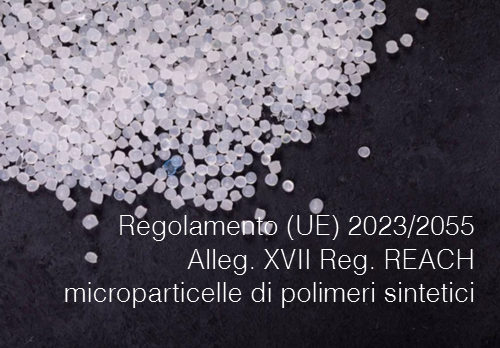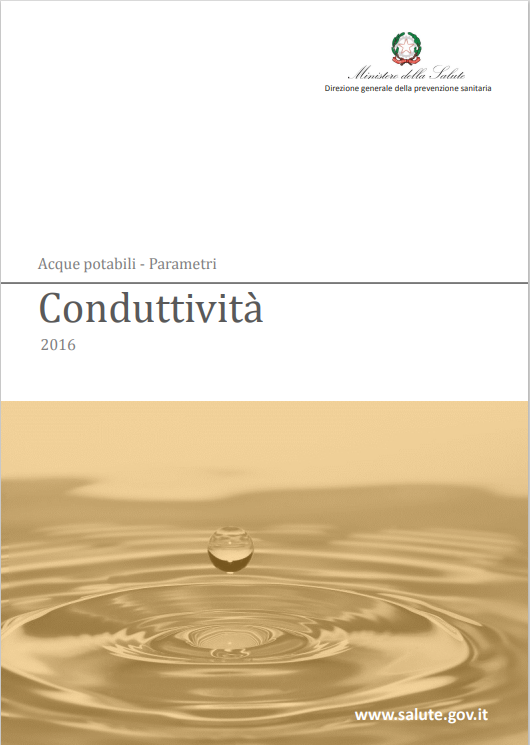Regolamento (UE) 2023/2055

Regolamento (UE) 2023/2055 / Alleg. XVII Reg. REACH - microparticelle di polimeri sintetici
ID 20474 | 27.09.2023
Regolamento (UE) 2023/2055 della Commissione del 25 settembre 2023 recante modifica dell...
ID 20807 | 21.11.2023 / In allegato
Re-evaluation of Some Organic Chemicals, Hydrazine and Hydrogen Peroxide
Part One - Compounds reviewed in plenary sessions (comprehensive monographs)
Part Two - Othercompounds reviewed in plenary sessions
Part Three - Compounds not reviewed in plenary sessions Part Three A—Extensive new data requiring new summaries
Part Three B - Few new data
In 1969, the International Agency for Research on Cancer (IARC) initiated a programme to evaluate the carcinogenic risk of chemicals to humans and to produce monographs on individual chemicals. The Monographsprogramme has since been expanded to include consideration of exposures to complex mixtures of chemicals (which occur, for example, in some occupations and as a result of human habits) and of exposures to other agents, such as radiation and viruses. With Supplement 6 (IARC, 1987a), the title of the series was modified from IARC Monographs on the Evaluation of the Carcinogenic Risk of Chemicals to Humansto IARC Monographs on the Evaluation of Carcinogenic Risks to Humans, in order to reflect the widened scope of the programme. The criteria established in 1971 to evaluate carcinogenic risk to humans were adopted by the working groups whose deliberations resulted in the first 16 volumes of the IARC Monographs series. Those criteria were subsequently updated by further adhoc working groups (IARC, 1977, 1978, 1979, 1982, 1983, 1987b, 1988, 1991a; Vainio et al., 1992).
The objective of the programme is to prepare, with the help of international working groups of experts, and to publish in the form of monographs, critical reviews and evaluations of evidence on the carcinogenicity of a wide range of human exposures. The Monographsmay also indicate where additional research efforts are needed. The Monographs represent the first step in carcinogenic risk assessment, which involves examination of all relevant information in order to assess the strength of the available evidence that certain exposures could alter the incidence of cancer in humans. The second step is quantitative risk estimation. Detailed, quantitative evaluations of epidemiological data may be made in the Monographs, but without extrapolation beyond the range of the data available. Quantitative extrapolation from experimental data to the human situation is not undertaken. The term ‘carcinogen’ is used in these monographs to denote an exposure that is capable of increasing the incidence of malignant neoplasms; the induction of benign neoplasms may in some circumstances (see p. 19) contribute to the judgement that the exposure is carcinogenic. The terms ‘neoplasm’and ‘tumour’are used interchangeably.
Some epidemiological and experimental studies indicate that different agents may act at different stages in the carcinogenic process, and several mechanisms may be involved. The aim of the Monographshas been, from their inception, to evaluate evidence of carcinogenicity at any stage in the carcinogenesis process, independently of the underlying mechanisms. Information on mechanisms may, however, be used in making the overall evaluation (IARC, 1991a; Vainio et al., 1992; see also pp. 26–27). The Monographsmay assist national and international authorities in making risk assessments and in formulating decisions concerning any necessary preventive measures. The evaluations of IARC working groups are scientific, qualitative judgements about the evidence for or against carcinogenicity provided by the available data. These evaluations represent only one part of the body of information on which regulatory measures may be based. Other components of regulatory decisions vary from one situation to another and from country to country, responding to different socioeconomic and national priorities. Therefore, no recommendation is given with regard to regulation or legislation, which are the responsibility of individual governments and/orotherinternational organizations. The IARC Monographsare recognized as an authoritative source of information on the carcinogenicity of a wide range of human exposures. Asurvey of users in 1988 indicated that the Monographsare consulted by various agencies in 57 countries. About 4000 copies of each volume are printed, for distribution to governments, regulatory bodies and interested scientists. The Monographs are also available from IARCPressin Lyon and via the Distribution and Sales Service of the World Health Organization in Geneva.
IARC 1999
Collegati

ID 20474 | 27.09.2023
Regolamento (UE) 2023/2055 della Commissione del 25 settembre 2023 recante modifica dell...

ID 18814 | 26.01.2023 / In allegato
La conducibilità elettrica o conduttività è un parametro che indica il contenuto di sali disciolti nell’acqua.

INAIL Quaderno 18/2020
L’Inail è organo tecnico nazionale ai fini dell’applicazione del d. lgs. 105/2015 che disciplina ...
Testata editoriale iscritta al n. 22/2024 del registro periodici della cancelleria del Tribunale di Perugia in data 19.11.2024